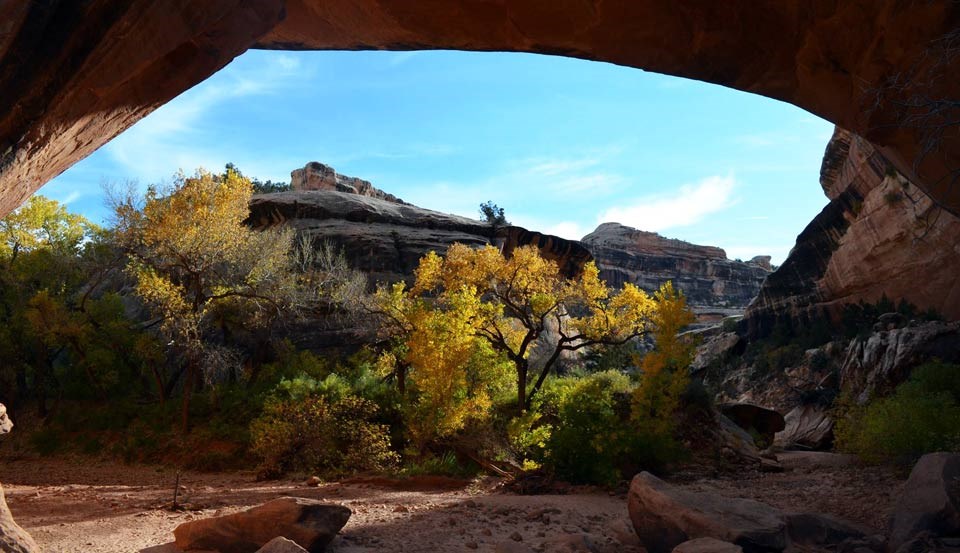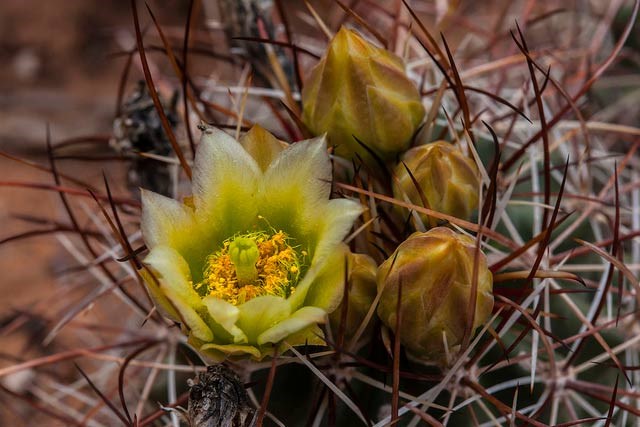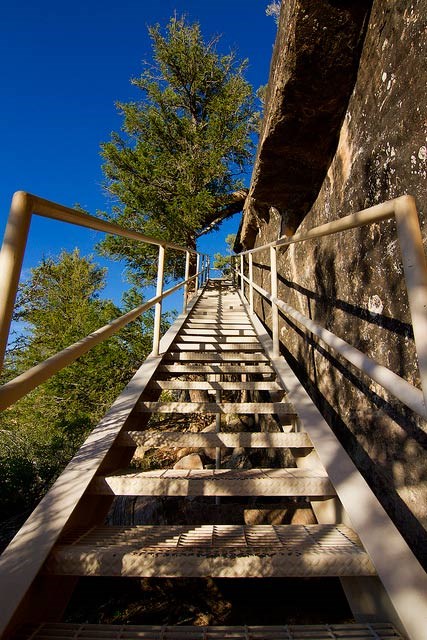
NPS Photo Visitors flock to Natural Bridges for the moderate temperatures and wildflower blooms of spring (March to May) and fall (September and October), making spring and fall the busiest times of year. However, even during the busy season, Natural Bridges is still quieter than many other national parks. 
NPS Photo by Jacob W. Frank What You Need to KnowSpring and fall have unpredictable weather. Weekends in the fall and spring bring larger crowds, but weekdays are usually quieter. WeatherRain showers support spring’s wildflower bloom. Spring can also be very windy. In the fall, September marks the end of monsoon season– afternoon thunderstorms are possible. In both seasons, temperatures can vary as much as 40 degrees between day and night. Snow showers and hail are possible. Check the weather forecast frequently and bring plenty of extra layers, including warm winter layers and water-resistant shells. Learn more about weather at Natural Bridges. Trail and Road ConditionsTrails become slick and muddy after rain showers. Check at the visitor center for the latest conditions. WaterWater is available in the visitor center and from the water spigot in the visitor center parking lot. Water is not available at trailheads or in the campground. Visitor CenterThe visitor center hours may change in spring and fall. Check our hours page for current times. CampingThe campground is open year-round and is first-come, first-served. The campground usually fills by 10 am every day in spring and fall. We recommend visitors plan to arrive early on a weekday for the best chance of getting a site. Check the fees page for camping fees. Avoid CrowdsThose looking for quieter trails should plan their visit for weekdays. If planning to come on a weekend, arrive early (8 – 9 am) and finish hiking by the afternoon. Hikes in the canyon may also be quieter and less crowded. Visitors seeking true solitude should consider visiting in winter, when visitation is much lower. 
NPS Photo by Andrew Kuhn Things to DoHikingTrails may be muddy in spring and fall, especially at the end of monsoon season in September. The hike to Owachomo Bridge is the most popular trail in the park because it is the easiest, and often driest, trail. The hikes to Sipapu Bridge and Kachina Bridge require at least an hour and offer very little shade. Sipapu Bridge, Kachina Bridge, and all loop trails may be slippery - hiking poles are recommended. The ladders on the Sipapu Bridge trail and the Kachina Bridge trail may also be slippery. StargazingTemperatures may reach below freezing at night and skies may be overcast. If the night is clear, stargazing is a must at Natural Bridges, the first International Dark Sky Park. Visitors are welcome to stargaze from their campsite, the visitor center parking lot, or on trails. The more adventurous can hike to Owachomo Bridge to see the Milky Way behind the bridge’s silhouette. In May and September, rangers may give astronomy programs, depending on staffing. Check our stargazing page for more information and events. Other ActivitiesKids (and adults!) can earn a Junior Ranger badge by completing activities in the Natural Bridges Junior Ranger Booklet [1.5 MB PDF file]. Booklets are also available in the visitor center. The 10-minute park film is available upon request in the visitor center. Ranger talks and walks are may be offered in spring and fall, depending on staffing. Call the visitor center for programs and times. Suggested Trips and Activities |
Last updated: February 15, 2018
